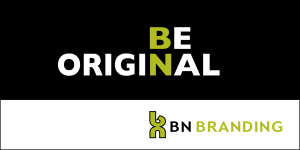![]() Marketing videos are popping up faster than you can yell “cut.” The YouTube stats are mind-boggling…
Marketing videos are popping up faster than you can yell “cut.” The YouTube stats are mind-boggling…
It’s the second-busiest website on earth, with 2.7 billion monthly users.
There are 114 million different YouTube channels, so you can delve deep into any subject under the sun. Seriously.
Five hundred hours of new video content is uploaded to YouTube every minute. Five billion videos are viewed every day, and a high percentage of them are categorized as marketing videos.
But only a small fraction are meeting the marketing objectives of the companies that post them.

Here are some of the common problems with DIY marketing videos :
Many marketing videos are nothing more than crummy powerpoint sales pitches, transferred to a different medium.
BOR-ING! They completely miss the fundamental benefit of using video…
It’s supposed to be a visual medium. It’s show and tell. Not just tell.
What you usually see online is just a “talking head,” where the only visual is a face sitting in front of a laptop camera or a cell phone. It’s what they’d refer to in politics as “bad optics.”
The other common — default — option these days is just type on the screen. Just read along… follow the bouncing ball.
Marketing videos like that don’t demonstrate anything.
They don’t capture the dramatic, emotional hook of the product or service. They’re not the least bit visually appealing. And they certainly wouldn’t qualify as “great content.”
Then there’s the gadget trap… The idea that a GoPro or a drone are the only tools you need to produce an effective marketing video.

New camera technology and new Ai tools make it easier than ever to demonstrate your product and capture the action, in dramatic fashion.
I saw a guy playing ping pong the other day with a Go Pro mounted on his head. It was a promo video for a paddle company.
Stand in a lift line at your local ski area and you’ll see that every other helmet is mounted with a camera.
Visit the most popular tourist attraction in your area, and you’ll see a huge percentage of people capturing it on video. A lot of them are even flying drones to get a unique perspective.
Just because it’s everywhere doesn’t mean it should find its way into your marketing video.
Sure, GoPro footage and drone footage can look cool. But before you decide on the latest, greatest cameras to employ, make sure you have the messaging figured out.
So here are some tips if you’re thinking of producing marketing videos:
First of all, don’t jump the gun. Before you spend a dime shooting fancy drone footage, determine whether or not video is the right medium for the message. Just because you can to do a marketing video yourself doesn’t mean you should.
Let’s say you’re launching a new service… often those are tough to show. You can talk about it, explain it, and do your pitch, but there may not be anything to demonstrate on camera. You may not need video.
Here’s a good test… If you can walk away from the video screen and just listen to the audio without missing the point of the show, you know it’s not a good use of the video medium. It could have been a podcast.
A new product, on the other hand, can be held, touched, and demonstrated quite effectively on camera. So quit talking about it, and show it in action.
Rather than rambling on about the features of the product, show the outcome of using it… the happy ending that comes from your products.

If you decide that video is, in fact, going to be a fundamental component of your marketing efforts, then here’s what you need:
High-quality video footage that’s differentiated from your competitors.
You have to show something that no one else is showing. You need a visual idea that you can own, not just the same-old stock footage and visual cliches that everyone else in your industry shows.
A good scriptwriter will provide the big idea you need to differentiate your video from the crowd. Also known as a creative concept, that idea becomes the central theme of the show.
Drone footage is not a concept.
It’s what amateurs show when they can’t think of anything else to show. At best, it’s just a pretty aerial view of your parking lot or corporate office. At worst, it’s an ugly, worthless aerial view that will drive viewers away.
A talking head is not a concept.
Eons ago, before the advent of YouTube, I worked on long format corporate videos for big brands. We always pitched concepts that did NOT involve a corporate talking head. Because they’re boring, with a capital B.
I have news for you… unless you’re a supermodel or the world’s sexiest man, people aren’t going to tune in just to see your face. They might be interested in what you have to say, but they don’t care about seeing your face in lousy light, all distorted and unappealing.
Like Shrek.
When we absolutely had to use a spokesperson we made darn sure that person was attractive, well spoken and downright great in front of the camera. Professional actors, in other words.
Unless your brand hinges entirely on the personality of your leader, dump the straight, talking-head approach. If you insist on talking at the camera, cut away frequently and show something, anything, but your face.
Study how the great documentary filmmakers do it… it’s visual storytelling, not just audio.
A montage of product shots is not a concept.
Don’t fall into the shiny new car trap, where the entire video is just a series of product shots with a voice-over talking about all the great new product features. Go deeper than that. Find a simple, relevant concept and build your story around that.

Tell a compelling story. As the old saying goes, “Facts tell, stories sell.”
The only way to get a story into your marketing video is to write the script first. Shoot video second. Most small businesses never do that.
What most people don’t understand is, you need a script even if there’s no narration or voice over.
The script IS the story. The concept is in the script.
So you need a well-written script that follows your brand narrative. The script is the missing ingredient in most marketing videos.
From a communication standpoint, it’s the single most important component of any video project.
The script tells the cameraman what to shoot. It guides the editing process. It informs the decision on music and sound effects and graphics. It’s the blueprint for success.
In a perfect world, you’d write the script AND do storyboards before you ever start shooting.
For instance, if you’re selling a new bike write a script that focuses on the sheer joy and freedom of riding. (Think film short, not sales pitch.)
If you’re introducing a new type of sprinkler system, forget about the pipes and focus on families enjoying the lush, green grass.
The fact is, lousy videos can fail just as easily as any other marketing tool. So before you jump on the video bandwagon, take time to hone your message and develop a story that’s worth telling. In script form.
Small HD cameras and simple video editing software have made video production easy. Anyone can be a video producer, so small business owners and marketing coordinators are jumping on the bandwagon.
Don’t expect to just go out and get some HD footage and edit it into something brilliant. It seldom works that way.
First you have to nail your messaging. Spell out the story.
Then shoot the script. Then do great editing.
Then add music and graphics and sound effects.
It’s a painstaking process that involves thousands of little details, sound decision-making and great creative judgement.
It’s not for everyone.
Remember…. consumers have high expectations for video. We’re accustomed to seeing Hollywood quality stuff with high production values. So be very careful if you’re going to cut corners.
Does that hand-held footage really belong in your high-end car dealership or jewelry store?
Let’s be clear… online videos can be a game-changer for many businesses. Do it right, and get one that goes viral, and you might find yourself filling more orders than you ever dreamed of.
But video is not the be-all, end-all of any marketing effort. It’s just one part of the mix. It pays to get that one part right.
Here are some examples of successful marketing videos we’ve done.
For more on this subject on the Brand Insight Blog, try this post.
For a great script that’ll produce results, contact me at BN Branding. We can pull all the resources together that you need to produce a successful video.



Great thoughts here. If you make a video that just has a talking head, it might as well be a documentary. You should communicate with visual elements, not just auditory ones.
Thanks for the input! Very interesting. Can you recommend some simple easy to use video editing software for a training product I’m creating? I need to insert some slides as I speak…
thanks!
Asher
Great points! Just like you said, I always tell my clients is that a video should tell a story. It has a beginning, a middle, and an end. That end should be a “call to action”. Marketing video doesn’t pay off (in terms of dollars) until the viewer takes some sort of action based on the video.
We always urge clients to think visually for a video. We don’t like green screens, we think it looks fake and part of the reason you do videos is to build trust with prospective clients. Inauthentic backgrounds or trickery undermines that. We also dislike the very popular “words on a screen” videos that have no images whatsoever, just flash a bunch of facts at you. Please, just give me the white paper, I can read! Video should do exactly what others here have said, “Tell me a story.” that is the formula prescribed by Don Hewitt more than 40 years ago for “60 Minutes,” and it is no less relevant today for marketing videos. And also, try not to sell so hard. It shouldn’t be a commercial! People don’t watch them on tv, if it feels like a commercial, they won’t watch it on the web either. Tell stories, be like a news crew, cover your company. That’s it.
Very clear and concise article!
Hey Asher, if you’re looking for something easy, then I’d suggest iMovie or Windows Movie Maker.
I completely agree – the majority of brands aren’t using video to its full potential. From a brand strategy (http://www.milesdesign.com/about/brand-strategy) point of view, using video needs to be done in a strategic way. Does your brand offer a product of service that requires video to help explain and introduce the topics?